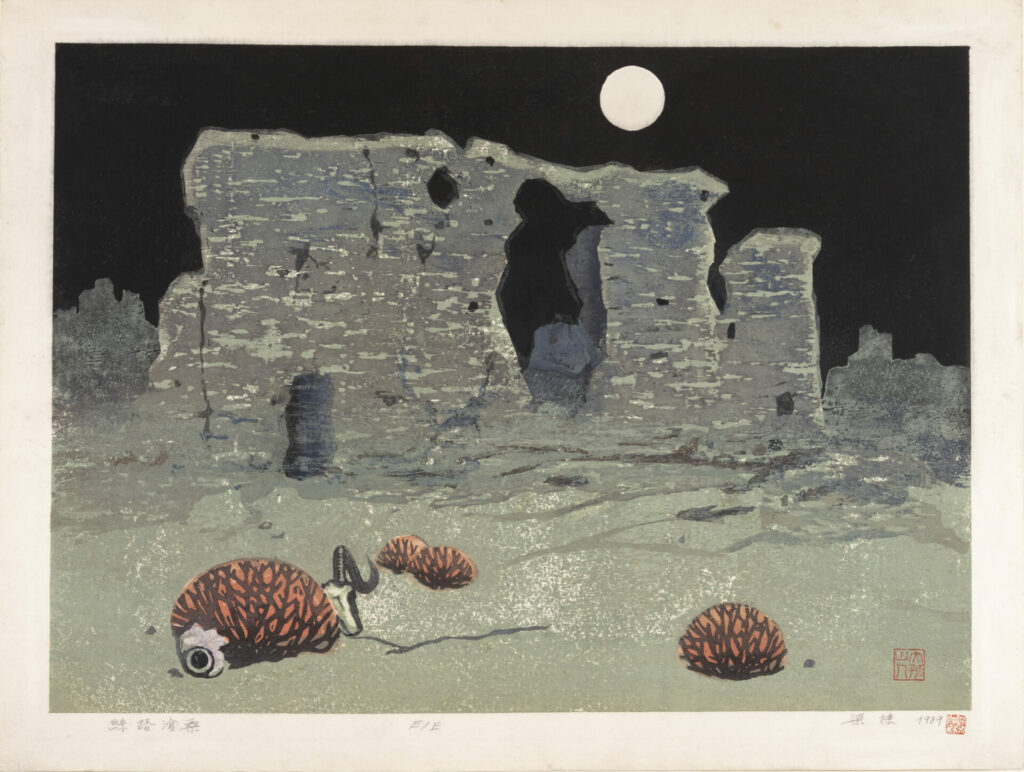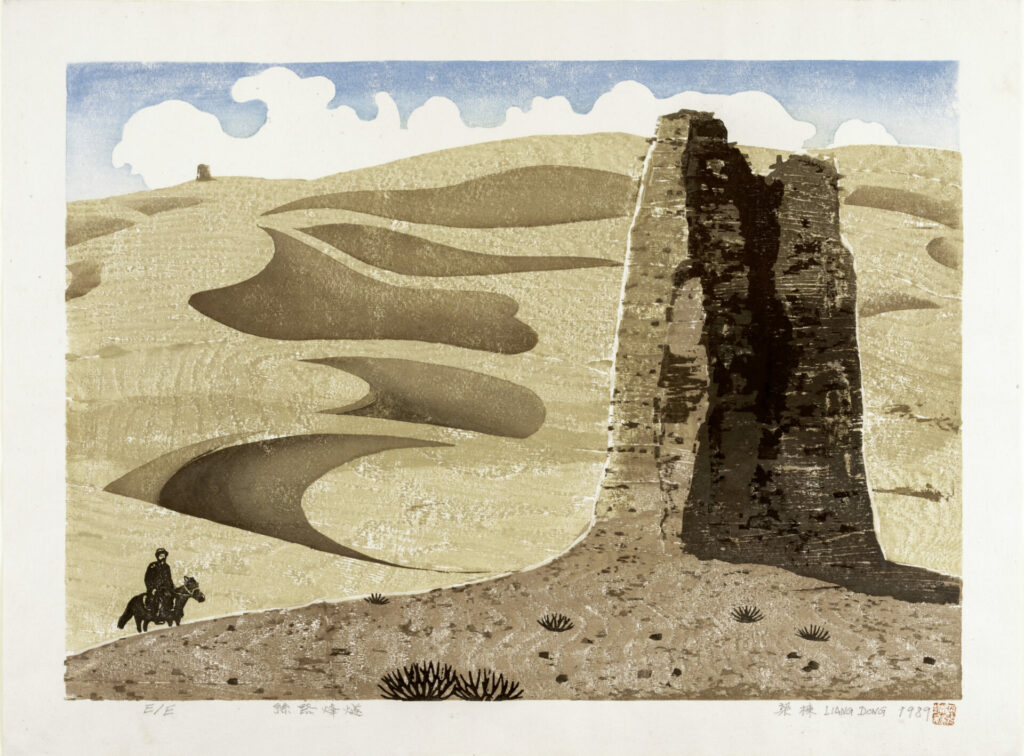Liang Dong 梁棟
* 1926 in Fengtian (today: Liáoníng), China


The Silk Road is one of the oldest trade routes in the world. The caravan network connects East Asia with Central Asia and the Mediterranean over a distance of about 6,400 kilometers. The term Silk Road is an invention of the 19th century and goes back to the geographer Ferdinand von Richthofen (1833-1905), who used it for the first time in 1877. The Silk Road reached its greatest importance between the 2nd century BC and the 13th century, before goods were increasingly transported by sea. The Silk Road began in Xi’an, the first capital of the Chinese Empire, followed the course of the Great Wall of China to the northwest and led to Afghanistan and on to the Mediterranean. Only a few merchants traveled the entire route – it was customary to transport goods along part of the route in order to resell them to middlemen, because the journey was not only considered particularly dangerous, but could also take up to two years. Thus, along the Silk Road, trading cities such as Samarqand or Buxoro flourished. Between them, oases or caravanserais sprang up, often only a day’s journey apart, providing shelter for travelers.
Over the centuries, various goods were traded. Mostly silk, spices, lacquerware and porcelain were transported from east to west, while woolen fabrics, gold, silver, precious stones and glass were transported in the opposite direction. But not only traders traveled on the Silk Road, scholars were also attracted to it, so that knowledge spread via the Silk Road. One example of this is the knowledge of how to make paper, which was invented by the Chinese official Cai Lun 蔡倫 (c. 50-121). Paper made of plant fibers already existed before, but Cai Lun improved the quality and standardized the production in 105, so that paper became cheaper. When the first paper mills were built in Europe in the 14th century, they provided the basis for the printing processes developed in the 15th century for the dissemination of images and writings. In China, on the other hand, the oldest secured book was printed as early as 868 with the Diamond Sutra. The script was found in 1907 in Dunhuang, an oasis city on the Silk Road, and is now preserved in the British Museum in London. The Diamond Sutra is also an example of how Europeans set out to explore the heartlands of the Silk Road from the second half of the 19th century. In the process, they discovered many ruins and recovered cultural assets such as manuscripts and frescoes, which they transported away and placed in European museums. Today, China – along with many other countries – laments the theft of cultural assets by the expeditions of the time, which mostly originated in Europe.
Over many centuries, the Silk Road formed an exchange between different cultures that was as far-reaching as it was diverse. It is therefore not surprising that in many places along the Silk Road, Muslims, Buddhists and Christians lived peacefully together for a long time.
